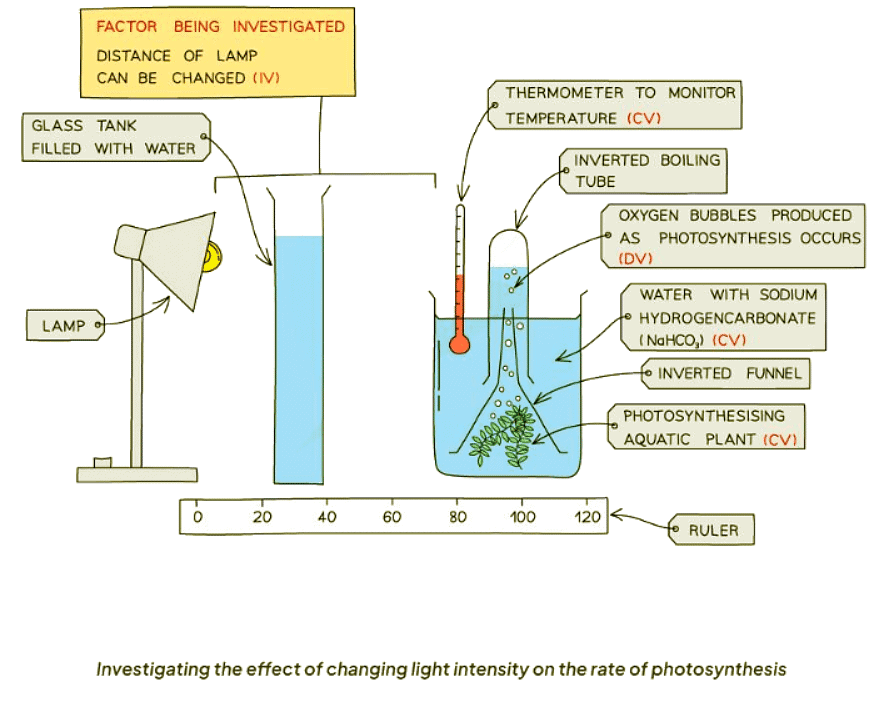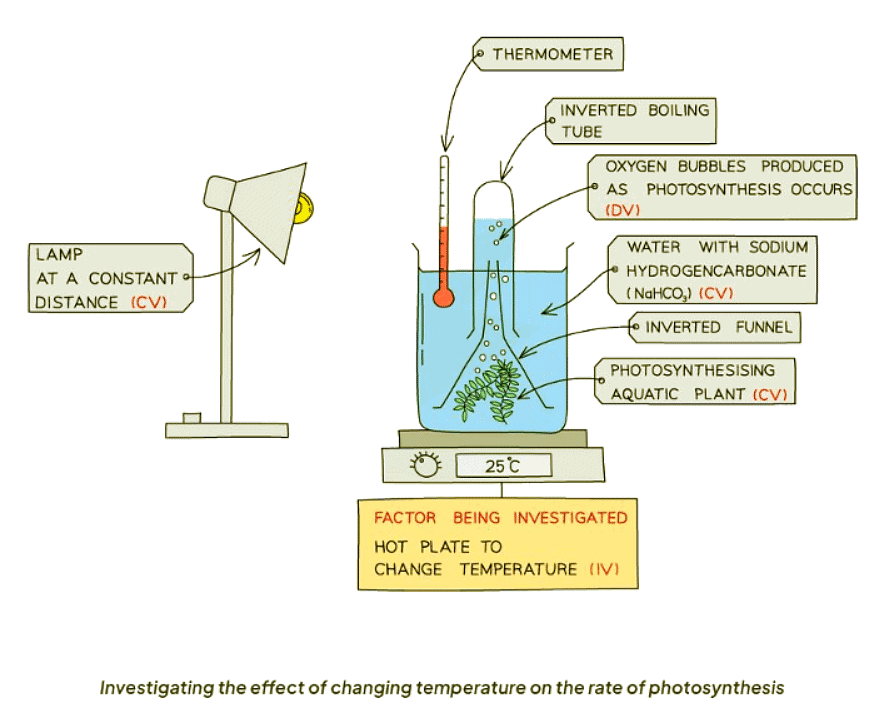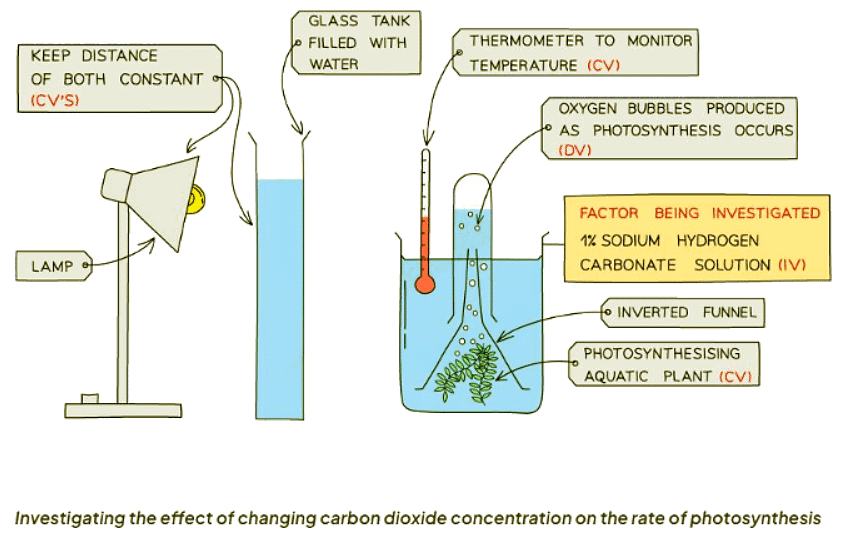Class 10 Exam > Class 10 Notes > Biology for GCSE/IGCSE > Investigating the Rate of Photosynthesis
Investigating the Rate of Photosynthesis | Biology for GCSE/IGCSE - Class 10 PDF Download
Investigating the Rate of Photosynthesis
- The plants typically used for this experiment are Elodea or Cabomba, which are types of pondweed.
- During photosynthesis, oxygen gas is produced and released by the plant.
- When the plant is submerged in water, the released oxygen can be observed as bubbles emerging from the cut end of the pondweed.
- The number of bubbles produced per minute can be counted to measure the rate of photosynthesis.
- A higher number of bubbles per minute indicates a faster rate of photosynthesis.
- For greater accuracy, the oxygen released can be collected in a test tube inverted over the pondweed for a longer period, and the volume of oxygen collected can be measured.
This practical experiment can be used in the following ways:
Investigating the effect of changing light intensity
- This can be achieved by positioning a lamp at various distances from the beaker containing the pondweed.

Investigating the effect of changing temperature
- This can be done by changing the temperature of the water in the beaker

Investigating the effect of changing carbon dioxide concentration
- This can be achieved by dissolving varying amounts of sodium hydrogen carbonate in the water within the beaker.

- Care must be taken when investigating a condition to keep all other variables constant in order to ensure a fair test
- For example, when investigating changing light intensity, a glass tank should be placed in between the lamp and the beaker to absorb heat from the lamp and so avoid changing the temperature of the water as well as the light intensity
Question for Investigating the Rate of PhotosynthesisTry yourself: What is the purpose of counting the number of bubbles produced per minute in the experiment?View Solution
The document Investigating the Rate of Photosynthesis | Biology for GCSE/IGCSE - Class 10 is a part of the Class 10 Course Biology for GCSE/IGCSE.
All you need of Class 10 at this link: Class 10
|
101 videos|193 docs|33 tests
|
FAQs on Investigating the Rate of Photosynthesis - Biology for GCSE/IGCSE - Class 10
| 1. What factors can affect the rate of photosynthesis? |  |
Ans. Factors that can affect the rate of photosynthesis include light intensity, carbon dioxide concentration, temperature, and the availability of water and nutrients.
| 2. How does light intensity impact the rate of photosynthesis? |  |
Ans. Light intensity directly affects the rate of photosynthesis as it provides the energy needed for the process to occur. Higher light intensity usually leads to an increase in the rate of photosynthesis until a certain point where other factors become limiting.
| 3. What is the role of carbon dioxide in photosynthesis? |  |
Ans. Carbon dioxide is a crucial reactant in the process of photosynthesis. It is used by plants to produce glucose and oxygen through the conversion of carbon dioxide and water in the presence of light.
| 4. How does temperature influence the rate of photosynthesis? |  |
Ans. Temperature affects the rate of photosynthesis as enzymes responsible for the process have an optimal temperature range. Too high or too low temperatures can denature these enzymes, leading to a decrease in the rate of photosynthesis.
| 5. How can the rate of photosynthesis be measured in an experiment? |  |
Ans. The rate of photosynthesis can be measured by monitoring the production of oxygen, the consumption of carbon dioxide, or the production of glucose in a controlled experiment using a plant species like Elodea or spinach.
Related Searches




















